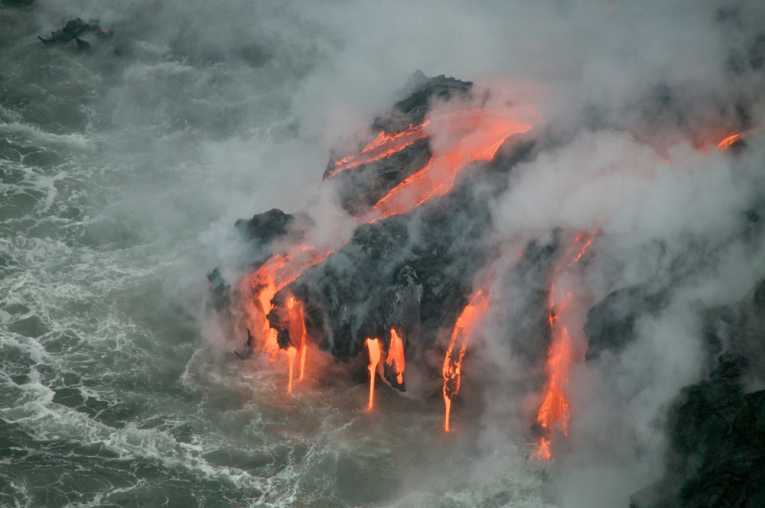Scientists have taken just a fortnight to map the creation of an underwater volcano in high resolution. After picking up seismic waves on Sunday 9 October, Spanish scientists from the National Geographic Institute (Instituto Geografico Nacional), spotted the volcano in the Canary Islands in waters near El Hierro Island.
Just 15 days later, specialists at the public research organisation, the Spanish Institute of Oceanography (Instituto Espanol de Oceanografia) completed the detailed mapping of how the underwater volcano was formed by using state-of-the-art system.
Juan Acosta, who is heading-up the group researching the volcano, says, "This is probably the first time that such a young underwater volcano has been mapped in such high resolution.

This image was taken in 1998 from within the Spanish Exclusive Economic Zone in the area of El Hierro Island. The second has been taken now and shows the new volcano and its lava tongue that descends in the path of the old underwater valley. Credit: IEO/MICINN
"It is spectacular to see how what was once an underwater valley is now a volcanic cone with its descending lava tongue."
The cone-shaped underwater volcano is 100-metres high, 700-metres wide and is 300-metres underwater. Its crater is 120-metres wide and lava is slowing flowing down the underwater valley.
On 24 October, researchers at the institute's ship, Ramon Margalef, finished mapping the sea bed using powerful sensors that can pick up details on the sea bed as small as 10 metres and by employing parallel scanning. The investigation has been named Bimbache after the first peoples to populate El Hierro Island.

This image was recently taken and shows the new volcano and its lava tongue that descends in the path of the old underwater valley. Credit: IEO/MICINN
Scientists are monitoring the gas plumes emerging from the volcano crater and will pass on details to the PEVOLCA committee that oversees the Civil Protection Plan for Volcanic Risk.
Over the next few days, high-resolution video and pictures of the cone will be captured from the Liropus submarine, under the direction of the institute's Francisco Sanches. The next stage of the investigation is to examine the physical and chemical nature of the water near the volcano, as well as the directions of the currents.
Thirteen years earlier, the crew of the ship Hesperides mapped the same area and its records have been compared with those of the last month to confirm the creation of the volcano.










